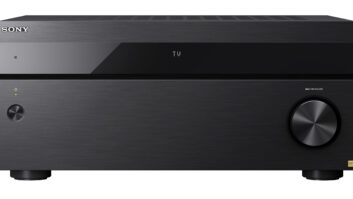A couple of weeks ago, I was called out to look at a job. The house had already been pre-wired and now that the customer had moved in, he was ready to have some audio installed to – to borrow an over-used phrase – “make the house a home.” (A nice housewide audio system has a way of doing that though, don’t ya think?)
So I’m going through the home with him and he is explaining what he’d like me to install in his home and then I ask to see the home run so that I can get an idea of what I have to work with. He leads me to a cabinet in the living room and after I pull off the double-gang blank wall plate, I am not pleased.
What I want to say is, “Who in the hell did this to you?!” But what I actually say is, “So, uh, who wired your house?”
“Oh, it was someone that the builder brought in.”
“And what did you ask him to do for you?”
“We told him we wanted audio throughout the home and a surround sound system.”
“And he said he knew what he was doing?”
“Well, I figured he did because the builder recommended him. Why…?”
Why indeed. As in, “Why did they do such a piss-poor job? Why did they only pull only a single run of 16/2 to each control location? Why did they pull only a single speaker – bizarrely located off-center in the primary, focal point wall – in the living room? Why did they not plan for even the most basic of surround systems? Why, dear God, WHY?!”
If you’ve been in this industry for any length of time, then you’ve likely come in behind some pretty atrocious work by other so-called “professionals.” When the economy was booming, it seemed that anyone capable of purchasing a jumbo-sized Sharpie and a piece of poster board and the basic spelling required to print out, “AUDIO/VIDEO SYSTEMS INSTALLED” was calling themselves a custom installer. We’ve had people tell us they had their system installed by the electrician, the plumber, the hardwood flooring contractor and “some guy that was walking around the neighborhood knocking on doors.”
Really? REALLY?!
I’ve relayed my share of nightmares over the years of this blog. I’ve told you about the system we saw that was stacked on a bunch of soda cans. (Not even matching soda cans, mind you, but four different kinds of soda cans. Not that that would have made it any better, of course, but, you know, it would have made it *a little* better.) I told you about the horrible Frankenstein cabling that I’ve seen going to projectors, about all of the horrible crimps and terminations, about gear that was just totally and completely not even connected at all and about surround sound front channels that were installed in side-walls firing towards each other.
But what I figured would be more interesting would be to open this up to my fellow installers. To ask them what other bits of horrible work they’ve come behind. The kinds of work that makes you just turn back to an empty room and ask, “What in the HELL were they thinking?!”
So I put out a request on Twitter asking people to share their nightmare install stories, and below — in the installer’s own words — are the responses that I received. Read on…if you dare! (Cue spooky music…)
Mark Hermann (@ultimatesoundav)
Systems Sales / Project Management, Ultimate Sound & Installations, Inc. –North
One of our most horrific AV nightmares was so ghastly we only agreed to move forward if the client agreed to time and materials with no guarantee of anything working or a time frame to completion. This is because the wiring was total spaghetti and the design so terribly implemented in a finished home with no as-built system drawings or ownership of the code. Original AV contractor AWOL. Here’s a picture of what we were getting into:

It was a house (horribly tacky too…but I digress) in Queens, NY where the client lived overseas and attempted to build it and AV system by hiring people over the phone and having a third party manage the project. Didn’t work out too well for him. Full blown Crestron system, distributed AV to sixteen rooms, Kaleidescape, home theater in a terribly designed space with controlled disco lighting.
Highlights included dangling Ethernet and video splices in mid air, touch panels falling out of walls with makeshift (or no) backboxes. Kaleidescape being hooked up with a COMPOSITE video switcher (client complained of poor video quality. Imagine that?), and dangling routers/switches.
What’s amazing is that the project had a history too. It turns out I saw this project like five years prior, working for a different AV company. When I saw it originally I told the owner we have to pass on it. It was a total tear down. He got very upset with me and demanded to see it himself. So I brought him to the house. After looking at it close up, he explained to the owner (who actually cried…a man) that this could not be fixed and apologized. He then thanked me outside for my accurate assessment.
It would take much longer to give the full picture of this nightmare. But suffice it to say it would make anybody’s Hall Of Fame.
Jonathan Joyce (@JDSystems)
JD Systems
Originally this was standard def video modulated over coax to 30 TV’s and one zone of audio for 4 different spaces. Although a limited system as far as quality of video and function, it can still be done neatly! Please take special notice to the milk crate…I don’t think Middle Atlantic has a line item for a 10 space milk crate! They did however supply the new racks we used to make it all right. We added 42 more displays totaling 72 and put them on a RGB-HD matrix. It took about 20 hours just to clean out the rat’s nest of wire in the drop ceiling. The build out took 80 hours including wiring, hanging, termination, and programming. The end result is a neatly wired and properly cooled Crestron controlled AV system with four audio zones, 20 sources, and 72 displays. We are now in the process of upgrading with the addition of 30 more displays and iPad control. Here are the before and after pictures of the job:

Christopher Neto CTS (@chris_neto)
Consultant, AV Helpdesk Inc.
In the commercial AV world you would expect that all the work to be completed as per spec. I had an instance where a 10 room “cookie cutter” style update went horribly wrong.
The job was simple: Replace the existing projector with a newer projector and add a simple control processor for remote monitoring. The room was in working condition so the job seemed way too easy. The AV manager had just enough to have the equipment replaced and the processor added. Since the existing system was 5-10 years old the cabling would be reused to save time and money.
On the day of the install the techs began to notice that the cabling that was used for the RS-232 connection was a thicker gauge then normally used but that it was workable. The standard DB-9 connectors were not playing nice and the install techs were becoming annoyed. Complications aside the job was completed. A few days later we began to lose communication to the control processors and projectors. Turns out the connectors and thicker gauge cable were coming apart. The known problem of the thicker gauge cable going into a standard connector should have set off alarms in the technicians head. To make matters you begin to discover that the soldering was not done right in the first place. So the wrong cable with the wrong connectors and poor soldering now lead to bigger problems.
When you add up the detective work necessary to find the problem, shutting down the conference rooms for a second time, and time spent explaining to the customer what went wrong, you really have to stop and ask, “What was the real savings?” In the customer eyes they see poor workmanship. The cost of pulling new cables was sacrificed in order to purchase the new hardware. The issue was eventually resolved when a 2nd set of techs came back with the right connectors and took the time to solder and test. All around there were tons of issues but many could have avoided had the installers stopped to think instead of pushing ahead to just get it done.
Johnny Mota (@jmota3)
Designer/Programmer/Social Media Manager, Vsys Automation
One of the worst jobs I’ve been called into fix was a fairly simple distributed audio/intercom system, or so I thought. When I went to my first meeting with the client, (who shall remain nameless because you’d recognize him) I thought to myself, “Whoever sold, installed, and programmed him the equipment, ripped him off just to do it.” Well, at least that’s the way he made it sound.
Some of the mentioned problems were:
* Programming errors (Intercom and Audio zones that didn’t control what they were supposed to)
* Keypads that did nothing
* Audio Zones with no control methods
* “Your audio equipment is bad” (the same equipment that he just bought from another integrator, brand new)
This project had no prints for me to trace things back to their sources, so I had to trace each wire from end to end. As you can imagine, it was very tedious and time consuming. What I found were bundles of Cat5 wires that were stretched, torn, and broken, leaving certain keypads inoperable. Some keypads weren’t even wired to anything, just put into the walls for looks.
Several of the Cat5 connections didn’t work because the termination was bad and or weren’t held to any standard at all, not even the 568A standard that was used for this system. Some of the keypads that didn’t work, didn’t work because halfway down the run – in a conduit clearly too small for the amount of wire they stuffed into – it was stretched so badly around multiple junction boxes that it broke some of the wiring inside the run. In one particular zone (the guest house), they ran a few extra wires for some future add-ons. Unfortunately for this individual, those extra wires were also broken because of stretching like the others. Because of how much wire was jammed in this conduit, I was unable to pull the bad wire out and replace it with new ones, leaving the guest zone separate from the rest of the system and we had to do a separate subsystem for the guests with local sources.
Several other keypads that didn’t work were installed outside and had been replaced due to water/rain damage. (When we replaced them, we also added water proof enclosures to prevent this from happening again.)
Things back at the head-end were a nightmare to decode. Not much was labeled, and the things that were marked, had been done wrong. However as I mentioned earlier, I ended up tracing each wire from point A to B.
Programming, believe it or not, was the easiest part of this project because it was so bad that I just ended up reprogramming the entire project from scratch.
In the end, after all the hours spent in the attic, under the house and behind the rack, everything worked out and we gave him 2 sets of CAD drawings, one paper and one digital so when he needs to upgrade or make changes, anyone could do it with ease.
There was nothing wrong with the equipment that he was told was “BAD”, just a “Fake it till you make it” AV guy making us all look bad who clearly didn’t know much about the equipment he was selling/installing.
TODD ANTHONY PUMA (@Thesourcehti)
President, The Source Home Theater Installation & Design
Just this week, I was in a new customer’s home. After asking a couple questions and getting a feel for his current needs, I checked out his rack. It looked great up front, but as I slowly turned the rack and got a look at the back, it was like seeing what you thought was a beautiful woman until she turned around and revealed a grotesque face. In short, I was stunned. It looked as if Spider-Man had a huge fight with every villain in New York. Basic errors were everywhere. All the power cords were spaced unevenly. There were no wire management bars to keep power separate from the low voltage. The installer must have performed some upgrades a number of different times, judging from the dated wiring that still remained: component-to-Cat6 extenders and IR cables for URC base stations crisscrossed around audio/video wiring, extra-long HDMI and audio cabling that wasn’t managed from top to bottom of the AV receiver, the Blu-ray player, the Apple TV and the cable TV box. It took me *10 hours* to clean up this abomination. Now it looks just as good in the back as it does in the front. The depressing part is that I see stuff like this all the time.
Matt Scott (@omegaaudiovideo)
President, Omega AudioVideo
I’ve cleaned up many a poor installation over the years, both in commercial and residential. One of the “best” of the worst installations that I’ve cleaned up involved a million dollar renovation where another company had done the initial installation. The installation involved a 5.1 system installed in a custom cabinet, multi-room audio installed throughout the home, CCTV system as well as a distributed cable, phone, and intercom. Sure, sounds pretty basic, but, well… it gets better.
My company was brought in after we had updated the owner’s offices with a brand new distributed entertainment system. They wanted their system updated and knew that there must be a better way to control all of their components. So after the initial site visit, we removed their 5.1 system in its entirety and re-installed it with proper cable lengths (ie- take out the 12-foot component cable and replace it with a cut-to-length 2-foot cable). We also installed and programmed a proper universal remote control system operating over RF so that the cabinet doors could stay closed.
We also discovered that instead of using proper compression connectors on all their cables, they seemed to alternate with compression and push-on/twist-on connectors that do a great job of shorting out and causing major distribution issues. One of the other great discoveries we found was that the initial installers had utilized the Zone2 of the main receiver to power the multi room audio system and had used a rotary volume control just stuffed into the cabinet to provide impedance matching for the system. Not to mention the few zones that had wires not secured into the in-room volume controls properly.
Oh and they didn’t label half of the cables in the distribution box just to make life fun. Long and short, we’ve slowly been fixing this system for about 6 months now, tackling a different room/system ever few months.
Heather Sidorowicz (@tech_chi)
Project Manager/ Designer, Southtown Audio Video
(For more from Heather, please read her excellent Guest Blog here to learn how she got into the world of Audio/Video installations!)
I have always felt that residential clients hold you up to a higher standard than commercial clients. I’m sure this is because they are spending their own money and not someone else’s. At our company the internal motto is, “Do it once, do it right.” Every time you take a short cut you’ll get burned. It’s just not worth it. Each time we have brought in a no name TV, it breaks and the client is mad at us. Doesn’t matter that they didn’t want to pay the extra money for a name brand.
So, when I am called to clients’ house for an estimate and the plates are not screwed to wall, and the wires are a huge mess of spaghetti, and then they tell me how much they liked the last company, I pass out. Right there on their floor. I keel over. (Okay, I don’t pass out. But I don’t get it either. How can they be or ever have been happy with this project?)
Last week I was called in to do an estimate at a client’s house. In his basement he had a Bose surround system with no subwoofer. A projector that had the wires 5 feet across the ceiling before they went into a plate and a nest of wires so big you could lose a tool in. His remote was broken and his system hadn’t worked in years. Upstairs on the main floor the rear speakers were in-wall in a different room. (I can’t make these things up). And he admits to me that he really likes the other company, but the guy wouldn’t give him a call back. He’s been waiting a month. WHAT?
People! You have rights. You have rights to a good system that works. You have the right to hidden wires. You have a right to a SIMPLE system; to one remote that controls it all. Don’t settle for less.
Josh Ware (@mhstechnologies)
Engineer, Mountain Heritage Systems
We found this latest “nightmare” upgrading a homeowner to a Control4 system. Part of the install was replacing an old Niles controller with a new Control4 audio matrix switch for 14 audio zones and adding 8 new keypads using the existing Cat5 cabling. All the audio equipment to be replaced was installed in the theater in a custom cabinet that I’m sure cost many times the price of our entire contract. There was a base cabinet that ran the entire length of the piece, with speaker-cloth inserts hiding the front L/C/R speakers and subwoofers. On either side of the projection screen — on top of the base cabinets — are tall cabinets that hold the theater and house audio/video equipment. The projection screen is mounted to a wood panel between these tall cabinets. The panel stands off the theater wall a couple of feet and creates a space that is accessible through the subwoofer or L/C/R holes. (This info is important later, but the main idea is that you must be able to fit through a hole the size of a typical 12″ sub to access the space behind the screen.)
The first problem was the other guy’s termination of the Cat5 wiring at the controller and at the keypads. Instead of RJ45 ends, he’d cut network patch cables and WIRE NUTTED the pig-tails onto the Cat5. We re-terminated the ends properly and connected the keypads to the audio matrix switch. That was definitely a first for me though; seeing that the previous installer probably used (at least) $30 worth of patch cords instead of $.75 worth of RJ45 ends.
Despite not even a single wire being labeled, everything else went fairly smoothly until we were ready to start programming. We discovered that we had a problem when none of the keypads would show up in the Control4 software. It was after a good amount of troubleshooting that our tech backed up and put a Cat5 tester on one of the keypad wires. Surprisingly, every pair was either open or crossed. More testing, and indeed, *every single* wire was bad with the same combination of crossed and open pairs. Adding to the confusion, except where the wires went through the wall between the theater and mechanical room, we could trace them all the way from the matrix switch to the mechanical room where they all went their separate ways. The techs definitely left the job site that afternoon scratching their heads.
The following day the guys brought the warehouse manager along to the job. The manager also happens to be the smallest guy that works at our company. After removing the speaker cloth and subwoofer, he was able to scoot on his back through the hole until he could sit up, get turned around, and stand up in the space between the screen and the wall. Whereas the wires coming through the wall of the mechanical room would give no slack, he was able to easily pull slack from the theater side. After a foot or two of wire, out of the wall came an awful, massive ball of Cat5 cabling and scotch locks. Apparently, in order to lengthen his short wires, the original tech had connected only the pairs he needed for the Niles, clipped off the remaining, and then shoving the whole mess back into the wall in a spot that is almost inaccessible.
All told, this ordeal cost at least a full day for two men and a couple of hours for a third (literally, inside a cabinet) to fix the problem. If it was the goal of the guy before us to make things difficult, he most definitely succeeded.
Allen Zentgraf (@azentgraf)
Consultant/Systems Programmer, Rayann Consulting, Inc. (@RayannConsult)
Over the years, people have asked me to rescue many automation projects. A recent example is a 20,000+ square-foot residence in Virginia. The home owner was unhappy about the lack of progress over the past year. He had fired the original integrator and had called Crestron for a rescue referral.
System components partially or completely non-functional when we arrived included:
• Crestron lighting system – all without engraving – and 10 thermostat HVAC system
• Crestron DM 8×8 distribution system
• Crestron 16 zone whole-house music system
• Three surround and one dedicated theater
• One dedicated theater
• 17 cameras with 2 DVRs
When we arrived, the multiple touchpanels provided only intermittent and unreliable control of video switching, the theater, some TVs, and parts of the home’s audio system. None of the thermostats or lighting were programmed into the system and only half the camera feeds were viewable.The entry gate and the Jandy controller would stop working randomly, and the 8-inch touchscreens where full of empty pages. Further, the integrator had provided only three Crestron gateways for a system that required six.
We created a full D3 program, defined loads and locations, added the engraving, and started ordering and replacing. We reconfigured the network, added and removed WiFi gateways, removed the TPMC-8xs from the wired LAN, installed custom firmware, and fixed a timing issue with the SIMPL program that was causing zone-control issues and was not allowing all the Crestron 16×60 amps to turn on correctly.
Since not all loads in the home were on Crestron lighting control, we installed and reprogrammed the non-engraved lighting switches for loads not previously controlled. We programmed the lighting system for zones-by-floor and scheduling. For the in-law suite, we added video feeds and programmed a remote to allow visitors easy control of the AV system and lighting. We programmed and connected the ten Crestron thermostats with scheduling. We also added and programmed 2 ML-600s at video locations previously controlled from a shared TPMC-8X, and we added eControl and four instances of iPad controls. Finally, we found that the camera wires and the gate, pool house, and pool controllers were not surge protected; we installed the proper devices and grounding to resolve the issues with these devices.
Now the client has fully-functioning TPMC-8Xs that control: house lighting with scheduling, house music, HDMI video distribution, ten zones of HVAC with scheduling, the entry gate, the pool and hot tub, full access to security camera video, all TV locations, and a pool AV system.
Many thanks to all of the above installers for taking their time to share some of the truly atrocious work they’ve encountered over the years! If you have a nightmare install story, please share it in the comments section. (Go on, it’s probably therapeutic.)
If you are a homeowner looking to have work down on your home, how can you ensure that you don’t get burned and become the fodder for a future nightmare story? One way is to interview CEDIA certified installers in your area. (They can be found at CEDIA.net.) And if you are an installer and want to ensure that you are trained up on the latest practices, parts and programming tips, be sure to attend the CEDIA EXPO, held in September this year in Indianpolis. It is the annual must-attend event for custom installation professionals. Click here to register, and use code CT07 at check-out to attend the show for FREE! (You’re welcome!)







